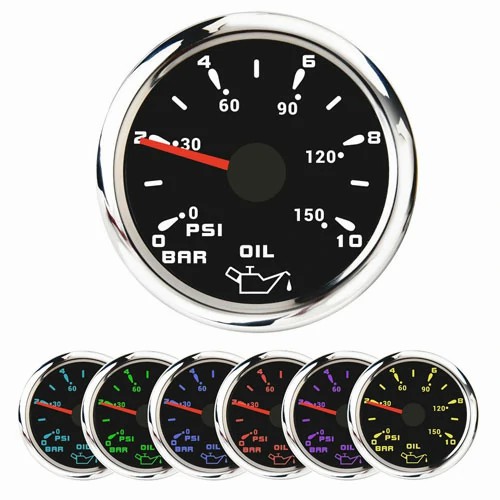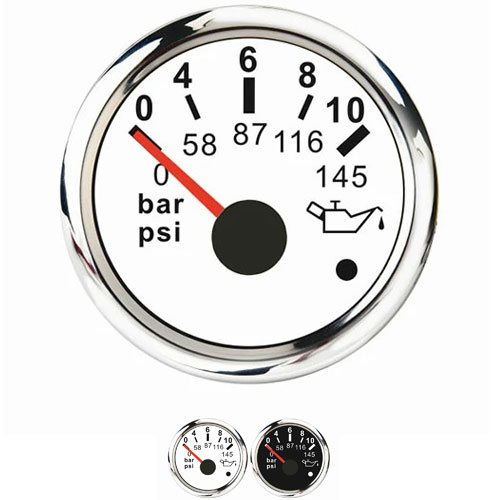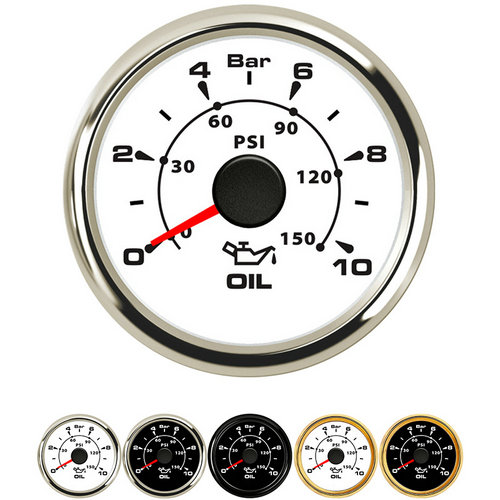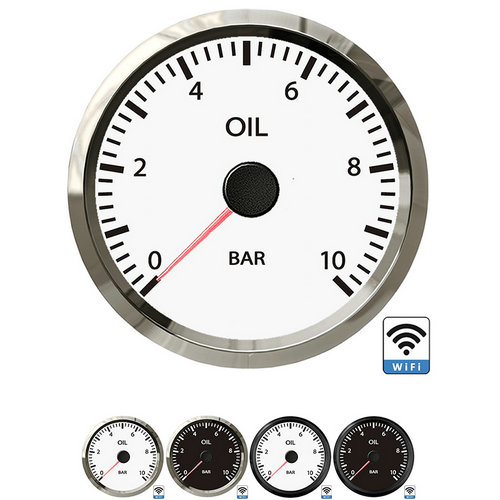marine fuel pressure gauge
When we replace the marine fuel pressure gauge, we should pay attention to many things.
1. In order to reduce the possibility of fire and ensure personal safety, the pressure of the fuel system must be released before removing the fuel pipe joint.
2. After the system is depressurized, a small amount of fuel will still leak out when the oil pipe joint is removed. In order to reduce the possibility of personal injury, cover the oil pipe joint with a rag before removal to prevent any fuel from flowing out and spraying out. During disassembly, a rag should be placed in its proper container.
Tools required: oil pressure gauge
1. In order to prevent someone from spraying gasoline when starting the engine again, the battery negative cable should be removed;
2. Loosen the fuel tank cap and drain the steam pressure in the fuel tank;
3. Connect the oil pressure gauge on the oil pressure connector. When connecting the pressure gauge, wrap a rag around the connector to prevent fuel splashing;
4. Insert the vent pipe into a suitable container and open the valve to release the system pressure. Now it is safe to assemble and maintain the fuel pipeline;
5. Put all fuel left in the instrument into a proper gasoline container
6. Make necessary repairs;
7. Tighten the oil tank cap;
8. Connect the battery negative cable; 9. Repeatedly "turn on" and "turn off" the ignition switch twice, with an interval of 10 seconds between each time, and then check the fuel leakage.
Special attention: In order to install the fuel system diagnosis device on the vehicle with plastic quick connect connector, special tools must be used to remove the connector. The plastic retainer can still be kept in the concave joint and the diagnostic device can be easily connected by using the oil pipe separation tool. In order to reduce the risk of fire and personal injury, before connecting the connector, drop a few drops of clean engine oil on the convex end of the engine oil pipe, the pressure gauge connector or the oil pipe blocking connector, which can ensure a good connection and prevent fuel leakage. During normal operation, the O-ring will swell after it is put into the concave joint, which can ensure that it can be connected correctly even without lubrication. Drop a few drops of clean engine oil on the protruding pipe end of the engine oil pipe, the pressure gauge pull head or the oil pipe blocking joint; Push both ends of the joint to make it protrude and grasp with claws; After installation, try to pull both ends of the joint to ensure reliable connection.
 English
English 






Get a Quote / Info